Introduction
Many organizations in today’s world need to use data from different sources. This is important because it helps them make better decisions and work more efficiently. Data analytics integration plays a crucial role in achieving this goal. When you combine different datasets, you can find new insights that might not be obvious when looking at them separately. In this blog post, we will explore practical steps for effective data integration, including its benefits, available tools, best practices, challenges, and real-world uses. If you want to improve your organization with integrated data, let’s get started!
Key Benefits of Integrating Data Sources
Enhanced Insights: Uncovering Deeper Analysis Through Data Analytics Integration
When you bring together data from different sources, you open up many possibilities for analysis. Data analytics integration allows you to see relationships between different datasets that were previously disconnected. For example, combining sales data with web analytics and customer feedback can give you useful insights. Here’s how you can do this:
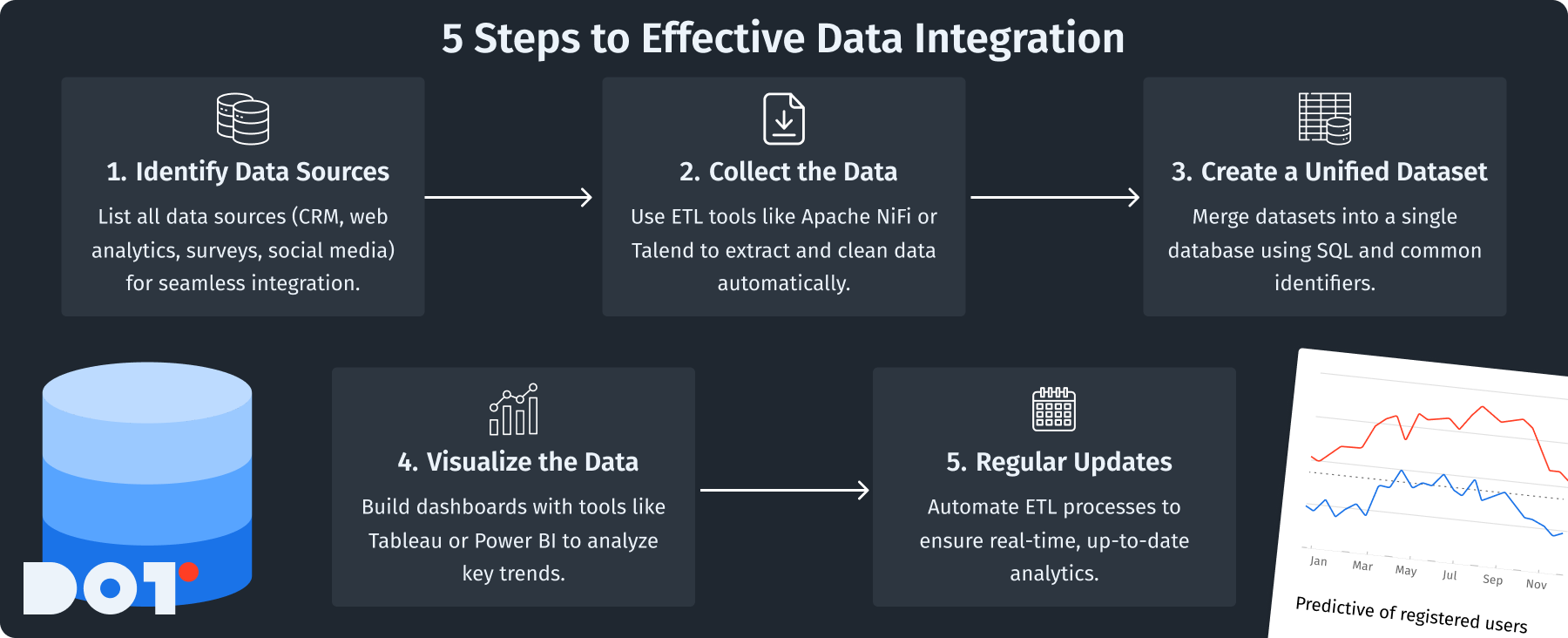
- Identify Data Sources: Make a list of all the data sources you use, like CRM systems, website analytics, customer surveys, or social media platforms. This step is essential for effective data analytics integration. Understanding the data source connectivity will help streamline the integration process.
- Collect the Data: Use ETL (Extract, Transform, Load) tools to gather data from these sources. Tools like Apache NiFi or Talend can help automate this and make sure the data is correct. You might also explore different data integration techniques to enhance the process.
- Create a Unified Dataset: Combine these datasets into one single database or data warehouse. You can use SQL (Structured Query Language) to write queries that mix tables together using common identifiers like customer IDs. An analytics data warehouse is crucial for storing this unified information effectively.
- Visualize the Data: Use tools like Tableau or Power BI to create dashboards. These dashboards can show how sales trends, customer feedback, and web traffic relate to each other. Data analytics integration enhances this visualization process, allowing for a holistic view.
- Regular Updates: Make sure to regularly run your data integration. Set up ETL processes to run automatically to keep your datasets fresh. Real-time data integration is essential to maintain the relevance and accuracy of your analytics.
By integrating these types of data, you can learn how product features affect customer satisfaction or see sales trends during marketing efforts. This broader view helps identify areas for improvement. Continuous data analytics integration can lead to sustained success and innovation.
Improved Decision-Making Processes
Integrated data can help you make better decisions. Data analytics integration has a significant impact on how effectively you analyze data. Here’s how to do this:
- Establish Key Performance Indicators (KPIs):
Choose KPIs that match your goals. For example, if you want to improve customer engagement, track conversion rates and customer lifetime value. - Analyze the Data:
Use the integrated data to find trends and connections. For example, check if higher customer engagement leads to increased sales. - Utilize Predictive Analytics:
Use predictive analytics tools to forecast outcomes based on current data patterns. This could involve machine learning models that analyze past purchases to predict future behavior. - Collaborate Across Departments:
Encourage collaboration between departments like sales, marketing, and operations based on insights from the integrated data. Data analytics integration fosters a collaborative atmosphere where departments share valuable information. Have regular meetings to share findings. - Drive Strategic Initiatives:
Use the insights gained to guide larger decisions, like expanding a product line based on sales trends recognized through the integration.
By this method, data integration not only gives you clear insights; it also supports you in adjusting to market changes quickly.
Cost Efficiency and Resource Optimization
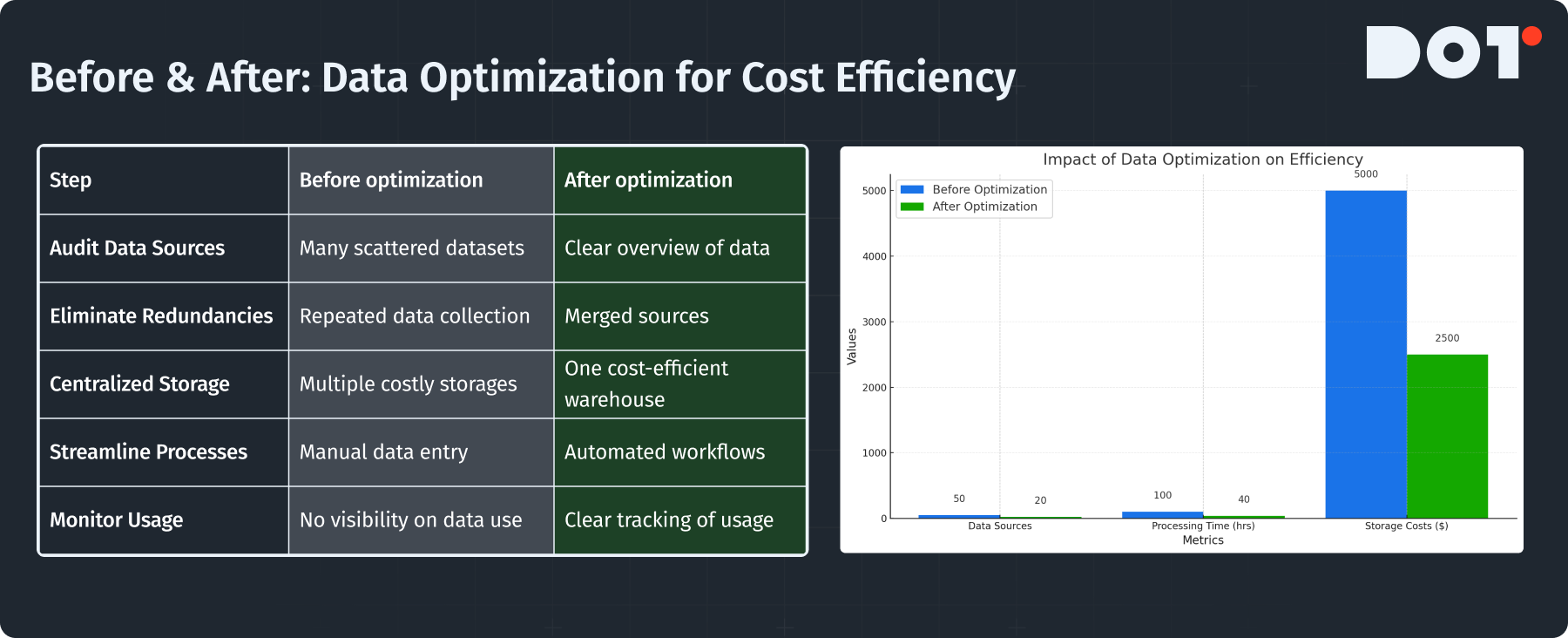
Integrating data sources can lead to cost savings. Here’s how data analytics integration plays a role in achieving that:
- Evaluate all your data sources to see how they help your operations. Look for overlapping datasets.
- Remove data sources that don’t add value. For example, if multiple departments collect the same data, combine that data into one source.
- Use a central warehouse to store all your data. This will help reduce the cost of maintaining many datasets. Solutions like AWS Redshift or Google BigQuery can do this effectively.
- Automate data collection and reporting to reduce manual work and increase efficiency. For example, use a platform that syncs data across systems automatically. Data analytics integration can facilitate this synchronization beautifully, especially when utilizing advanced business intelligence integration tools.
- Set up tools to track how data is accessed and find efficiencies. You can monitor how often specific datasets are used to see if they’re helping meet your analytics goals.
By making your data system simpler, you can save money on storage and resources, which also helps your organization stay agile.
Tools and Software for Data Integration
Popular Solutions for Data Analytics Integration (e.g., Apache NiFi, Talend, etc.)
Using the right tools is important for data integration. Here are some popular options that support data analytics integration:
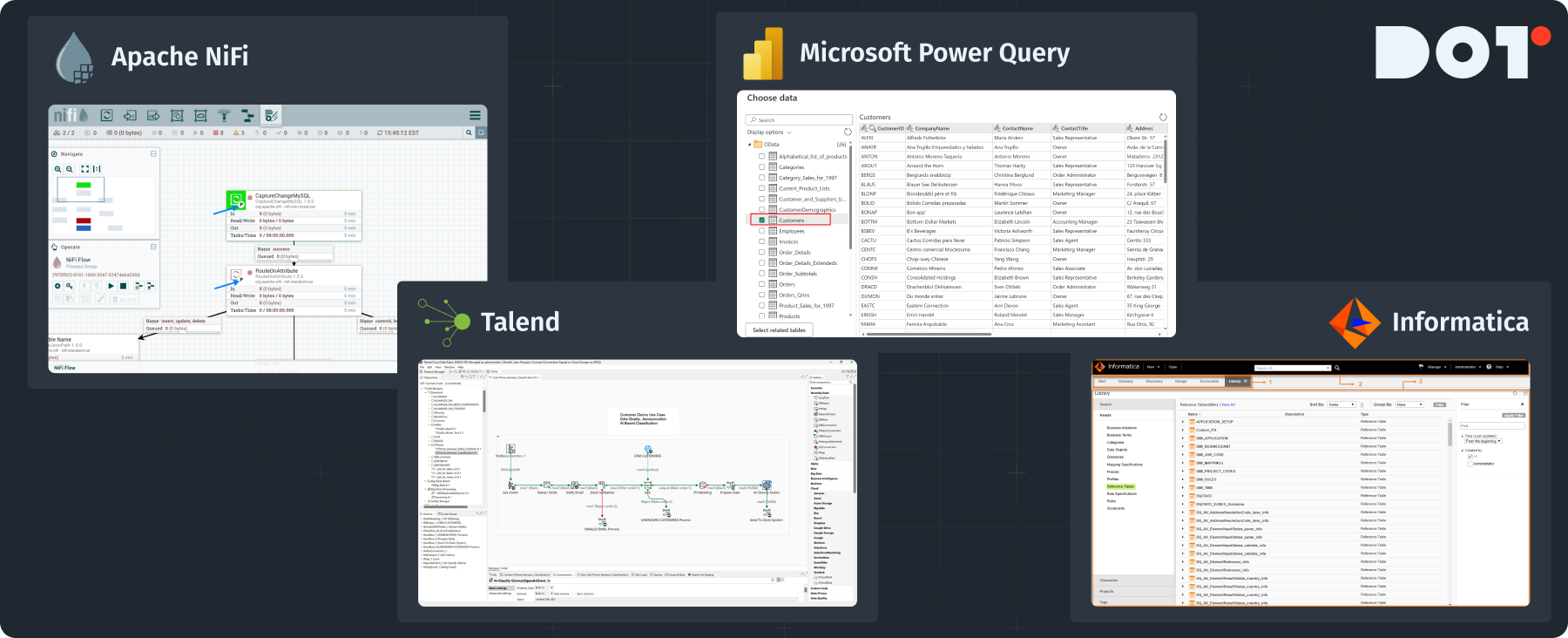
- Apache NiFi:
This free tool helps to automate data flow between systems. It’s easy to set up with a graphical interface that lets you design data pipelines clearly. - Talend:
A cloud-based tool that offers solutions for data integration, helping you with ETL processes and real-time integration of data. It also has templates that can make complex tasks easier. - Microsoft Power Query:
A part of Excel that helps users connect, combine, and improve data from many sources. It’s great for users who are familiar with Excel and need quick data integration. - Informatica:
A well-known data integration tool that works well in large data environments. You can use it for both batch and real-time data integration tasks.
Choose the tools that fit your organization’s size, budget, and needs. These data analytics platforms greatly enhance data analytics integration efforts. Try them with sample data before fully using them to see which one works best for your team.
Cloud-based Platforms for Data Analytics (e.g., Google Cloud, AWS)
Cloud-based platforms offer great flexibility and scalability for data integration. Data analytics integration can be particularly beneficial in a cloud environment. Here’s how to use them:
- Select a Platform: Decide between Google Cloud Platform (GCP) and Amazon Web Services (AWS). Both provide strong data integration services.
- Setup a Data Warehouse: Use Google BigQuery or AWS Redshift to create a data warehouse. This storage will keep your integrated data together.
- Data ETL Tools: Load your data into these platforms using built-in tools like AWS Glue or Google Cloud Dataflow to automate ETL.
- Leverage Big Data Solutions: Look into services like AWS Lambda or Google Cloud Functions that allow you to integrate data without needing to manage servers.
- Data Lake Creation: Create a data lake (using AWS S3 or Google Cloud Storage) to collect raw data from different sources before transforming it. This lets you gather large datasets for deeper analysis.
By using cloud platforms, you can simplify your integration tasks, lower infrastructure costs, and enhance security and compliance. Data analytics integration is streamlined in these environments, encouraging more efficient use of resources.
Want to see how this applies to your business? Schedule a free 20-minute consultation with one of our experts.
Ensuring Data Quality and Consistency
Data Validation Techniques
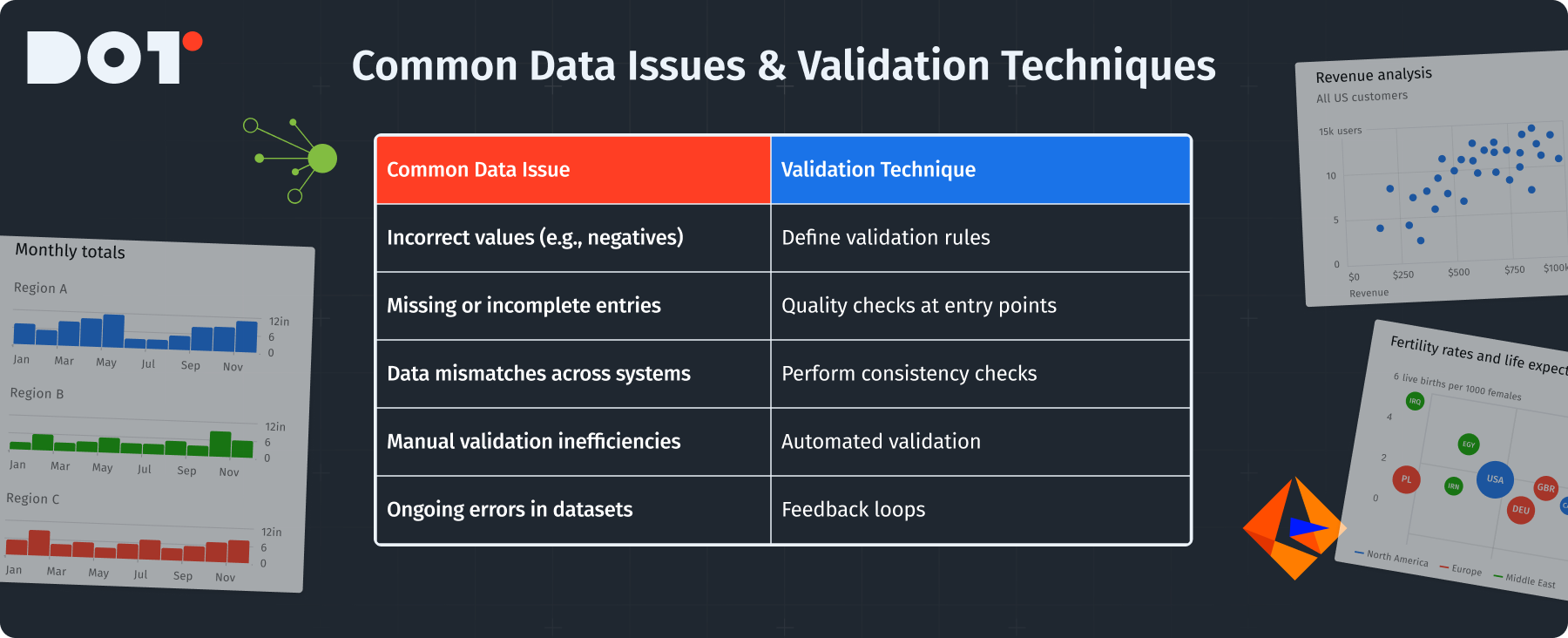
To make sure your integrated data is accurate, you should use data validation techniques. Here’s how data analytics integration can help:
- Set clear rules for each dataset. If you’re integrating sales data, check that numbers follow specific rules (like no negative values).
- Add checks during data entry to catch mistakes early. For example, verify that required fields are filled out correctly.
- Regularly check for mismatched data between systems, ensuring customer information is the same across CRM, ERP, and billing systems.
- Use tools like Talend or Informatica that have built-in validation features to automate these checks as data travels through the system.
- Allow users to report data issues they find. This will help improve data quality over time.
By using these validation techniques, you can enhance the credibility of your datasets, which leads to more accurate analysis and better decision-making. With a focus on data analytics integration, organizations can maintain a high standard for data quality.
Best Practices for Data Cleaning and Transformation
Cleaning and transforming data is essential when integrating data. Here are steps to make sure your datasets are ready for analysis, particularly through data analytics integration:
- Identify and Standardize Formats:
Review incoming data and make sure formats for dates, phone numbers, and email addresses are the same to avoid mismatches. - Remove Duplicate Records:
Use techniques to find and eliminate duplicates. This might involve specific Excel functions or using SQL to identify and delete duplicates. - Handle Missing Values:
Decide how to deal with missing data—do you fill them in or remove incomplete records? It depends on your analysis needs. - Transform Data for Usability:
Apply data transformation techniques like normalization (which means scaling data to a standard range), which can improve performance during analysis. - Document the Cleaning Process:
Keep detailed notes on your data cleaning steps. This is vital for audits and helps anyone looking at the dataset later.
Following these best practices will lead to high-quality datasets that help with insightful analysis and improved data-driven decisions. This is particularly relevant in the context of data analytics integration.
Common Challenges and Solutions in Data Integration
Addressing Data Silos
Data silos create barriers to successful data integration. Here’s how to solve this problem while promoting data analytics integration efforts:
- Start by finding out where data silos exist in your organization. Speak with department heads and check data access logs.
- Create a central place for all data so that everyone can access it. This can be a data warehouse or a data lake.
- Promote data-sharing practices across all departments. Leadership should stress the importance of data integration in meetings.
- Invest in strong integration tools that can connect different systems and allow all departments to access important data.
- Keep track of data flow and user access to maintain integrity. Schedule audits regularly to detect new silos and fix them quickly.
By breaking down data silos, you encourage teamwork and improve the quality of data analysis and decision-making. Emphasizing data analytics integration can help bridge existing gaps.
Tackling Data Format Inconsistencies
Inconsistent data formats can make integration difficult. Here’s how to handle this problem through data analytics integration:
- Conduct a Data Audit: Review incoming datasets to spot format differences. This can include checking date formats, spelling mistakes, or numerical issues.
- Establish a Standard Data Format: Document standard formats for all data types to improve consistency across the organization.
- Employ Transformation Processes: Use tools like Talend or Informatica to apply data formats automatically. Regularly ensure that data is transformed correctly when entered.
- Build an Integrated Data Dictionary: Create a reference document describing the format rules across your organization. This helps ensure everyone follows the same guidelines.
- Run Regular Quality Checks: Schedule audits to find format inconsistencies and fix them proactively. Set alerts for non-compliant new data.
By having consistent formats for your data, you can ensure that it is integrated smoothly for analysis, reducing errors and increasing confidence in the insights gained through data analytics integration.
Best Practices for Effective Data Integration
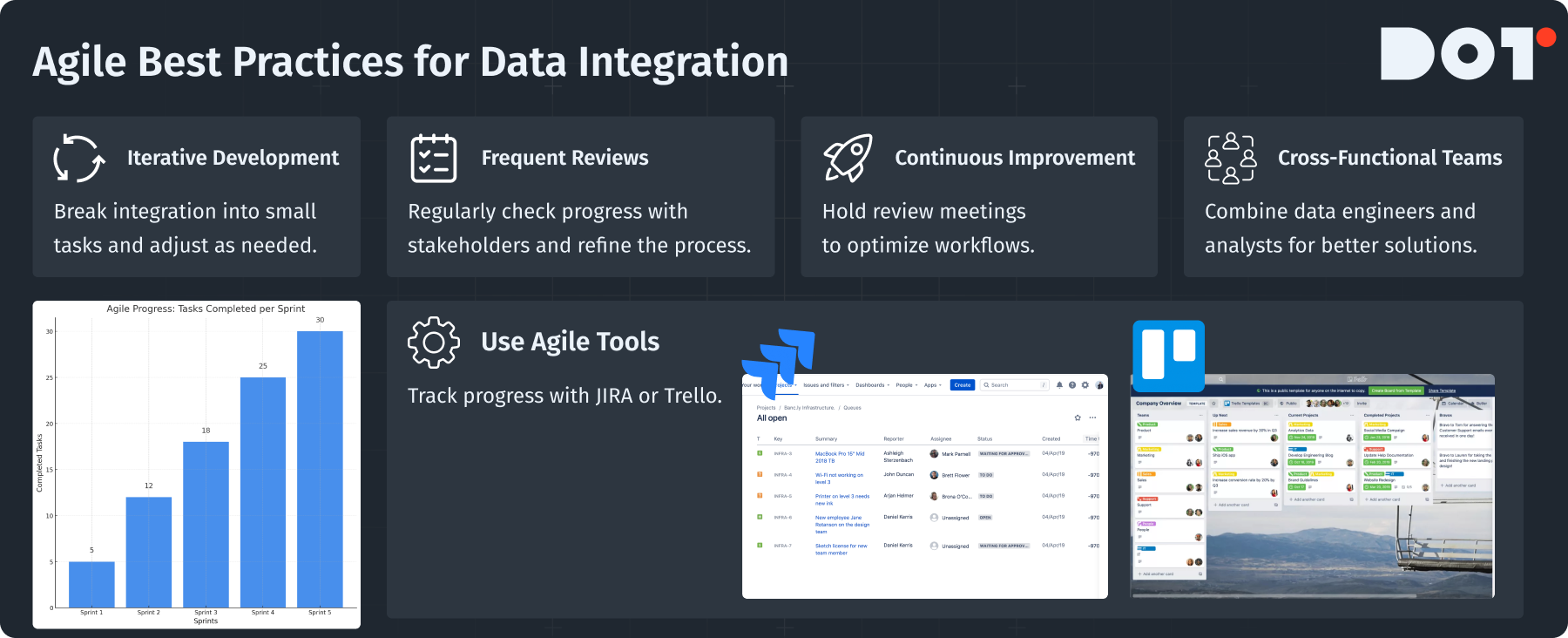
Adopting an Agile Methodology for Data Projects
Using an Agile approach can make your data integration projects more effective while emphasizing data analytics integration:
- Break the integration process into smaller tasks. Work in short cycles to focus on particular data integration aspects and make changes as needed.
- Regularly check progress with stakeholders and make adjustments based on their feedback. This can speed up the process and improve outcomes.
- Form teams that include people from different skills like data engineering and business analytics. This collaboration helps find better solutions.
- Create an environment where teams refine their processes often. Hold meetings at the end of each cycle to discuss successes and areas for improvement.
- Use tools like JIRA or Trello to manage tasks and visualize progress. This keeps everyone responsible and focused on project goals.
By adopting these Agile practices, your organization can quickly adapt to challenges and opportunities during data integration, leveraging data analytics integration effectively.
Developing a Clear Data Governance Strategy
A strong data governance strategy is vital for successful integration. Here’s how to develop one while acknowledging the significance of data analytics integration:
- Define Data Ownership: Assign specific roles for data management to clarify who is responsible for what.
- Create a Data Governance Committee: Set up a team to create and enforce governance policies that include representatives from all departments involved.
- Develop Policies and Standards: Write clear policies for data quality, security, usage, and retention. This guides how data is collected, shared, and maintained.
- Training and Awareness: Offer training to help all employees understand governance policies and the importance of following them.
- Regular Reviews and Updates: Make sure to regularly check and update governance policies as needed. Data management is always changing, and your practices should keep up.
By developing a solid data governance strategy, you ensure that integrated data is reliable and compliant across your organization. This is essential for effective data analytics integration.
Case Studies: Real-World Applications
Enovate Medical: Optimizing Patient Care through Data Analytics Integration
Enovate Medical, a health tech company, wanted a complete view of patient data to enhance care delivery. They faced challenges with fragmented data from different sources, like EHR systems and patient feedback. Data analytics integration was key to their solution. To integrate their data, they did the following:
Data Aggregation:
They used tools like Talend to gather patient data from multiple systems and consolidate it into a central database.
Real-time Analytics:
With real-time analytics, Enovate could monitor patient health trends as they happened, allowing for quick actions.
Training Staff:
They provided thorough training for healthcare staff on how to effectively use integrated data to improve patient care.
As a result, Enovate saw big improvements in patient outcomes and satisfaction, showing how important data analytics integration is in healthcare.
Sling TV: Enhancing Customer Experience via Comprehensive Data Analytics
Sling TV wanted to enhance customer retention and improve viewing experiences but had issues with data silos in marketing, subscriptions, and customer support. Data analytics integration was vital for their strategy. Their approach included the following steps:
Identifying Data Points:
Sling TV identified key customer data points in different departments to create a unified strategy.
Integration Pipeline:
They built a pipeline using AWS Redshift to bring together customer data from various channels, including viewing habits and customer support interactions.
Machine Learning Models:
By using machine learning, they could offer personalized recommendations based on comprehensive data insights.
The results were impressive, with customer retention increasing because of a tailored viewing experience derived from integrated data. Data analytics integration led to better overall service and satisfaction.
Checklist for Successful Data Integration
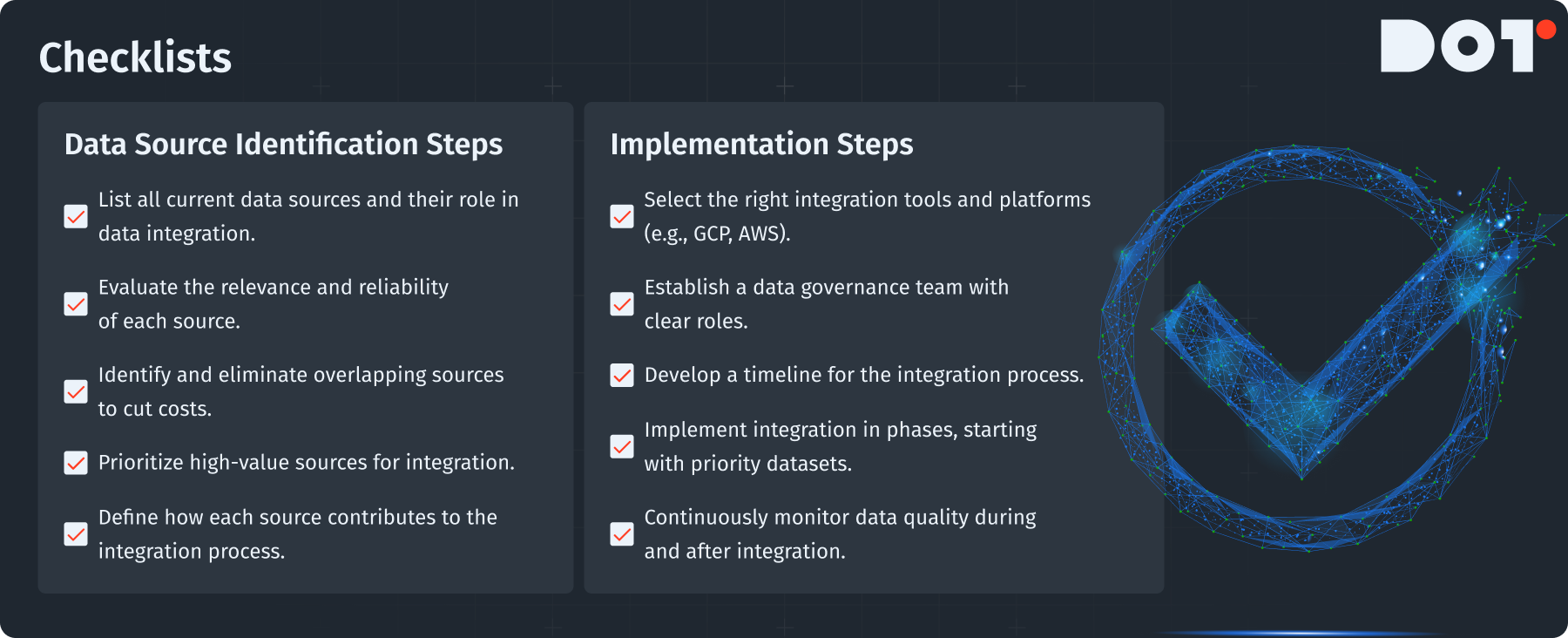
Data Source Identification Steps
List all current data sources used in your organization. Consider how each can support data analytics integration efforts.
- Assess the relevance and reliability of each data source.
- Identify any overlapping sources that may create unnecessary costs.
- Start with high-value data sources for integration.
- Outline how each source will contribute to the integration process.
Implementation Steps Checklist
- Choose the right integration tools and platforms (e.g., GCP, AWS).
- Form a data governance team and clarify roles.
- Create a timeline for the integration process.
- Implement integration in phases, beginning with priority datasets.
- Set up monitoring for data quality during and after the integration.
Future Trends in Data Integration
Emerging Technologies Impacting Data Integration
As technology changes, new trends will affect how we integrate data. Data analytics integration will be shaped by:
- AI will automate integration processes, enabling systems to learn and adapt, improving both efficiency and accuracy.
- Blockchain offers a secure way to share data, enhancing trust and ensuring data integrity.
- More organizations will use API-first strategies to make data sharing and integration easier. Data analytics integration will benefit significantly from these developments.
Summary
To sum up, data analytics integration provides important insights that can enhance decision-making, optimize resources, and give a competitive edge. By understanding the key benefits, following best practices, overcoming challenges, and looking at real-life examples, you can make the most of data integration in your organization. As we look to the future, staying adaptable and ready to embrace new technologies will be vital in reaping the benefits of integrated data analytics.



























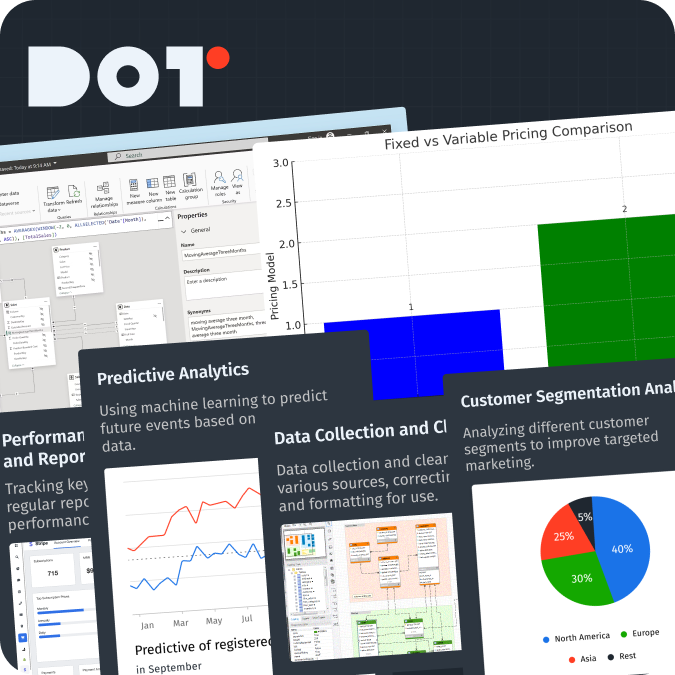
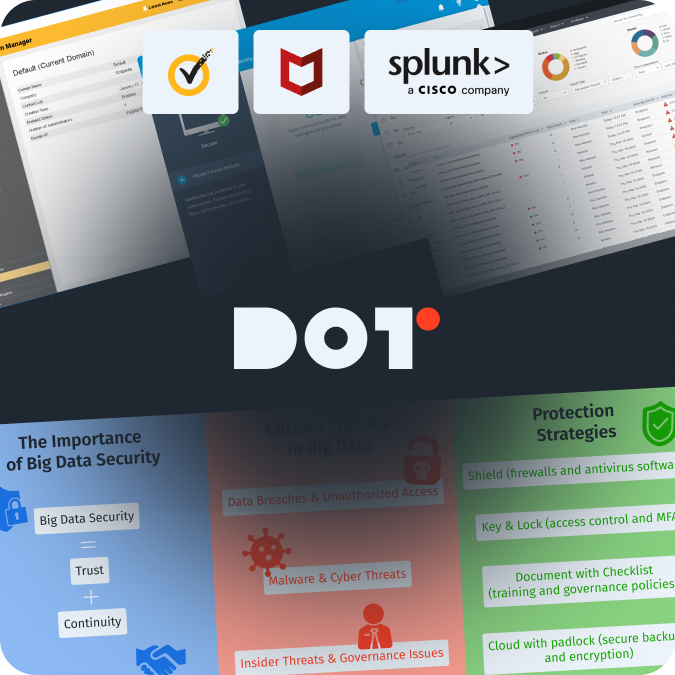
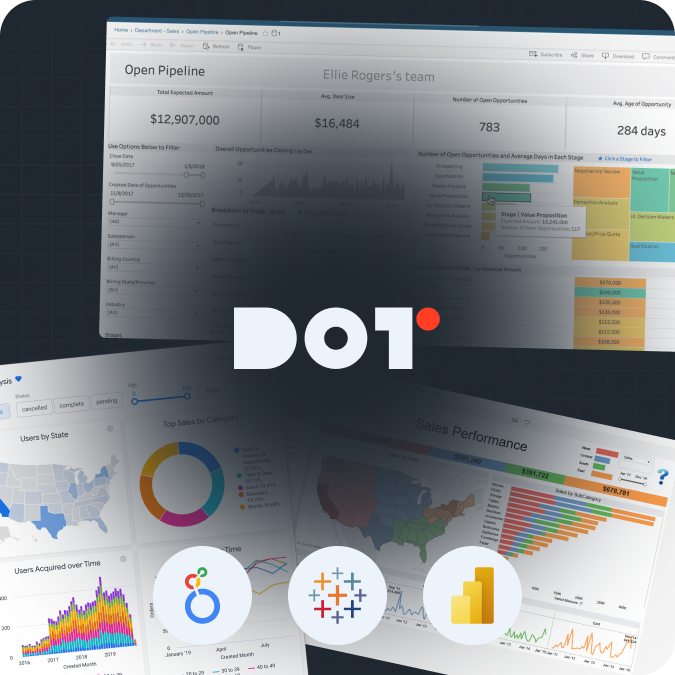
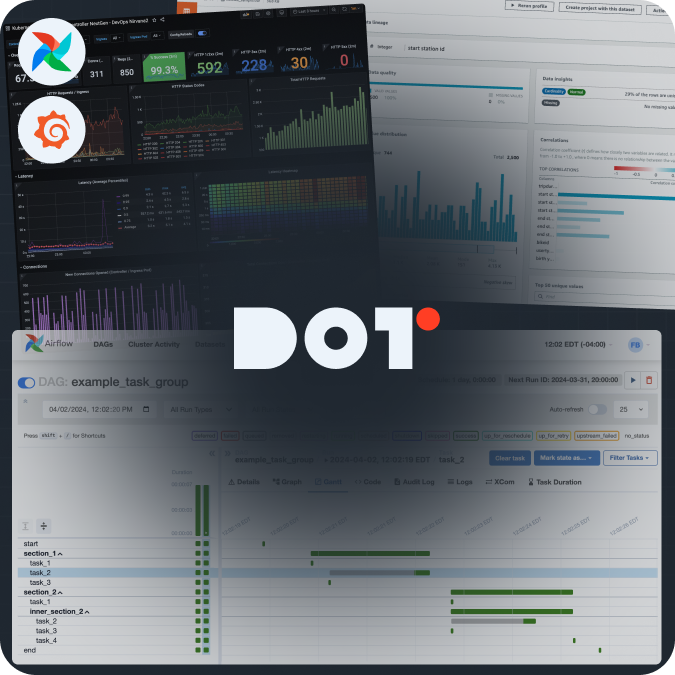
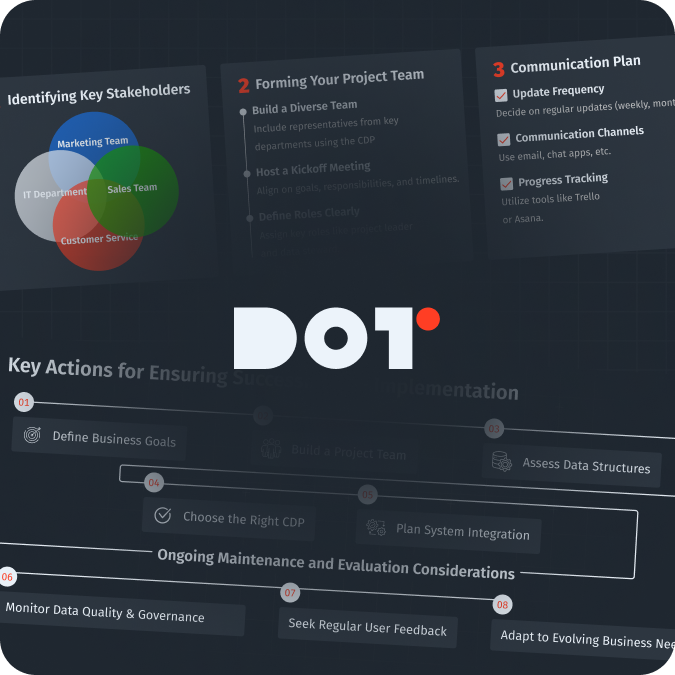

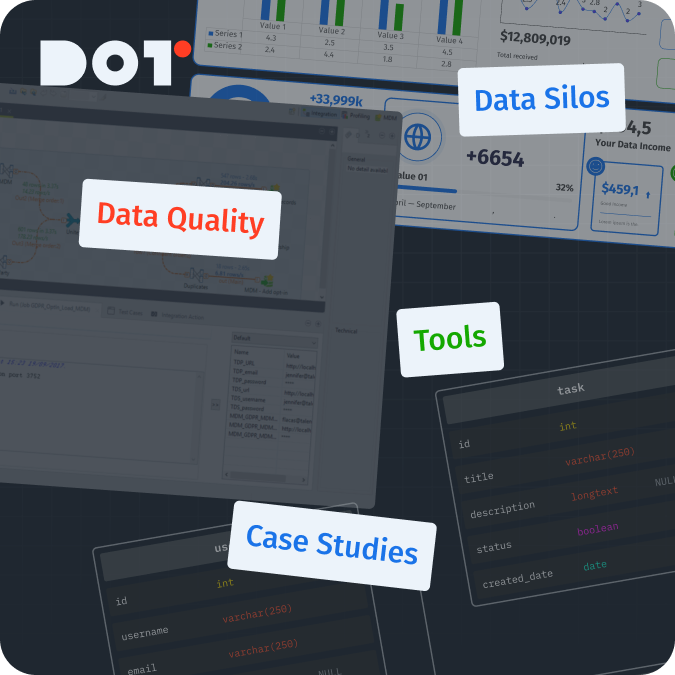
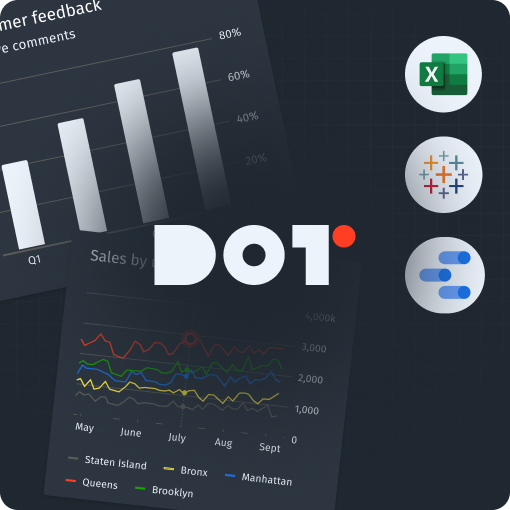

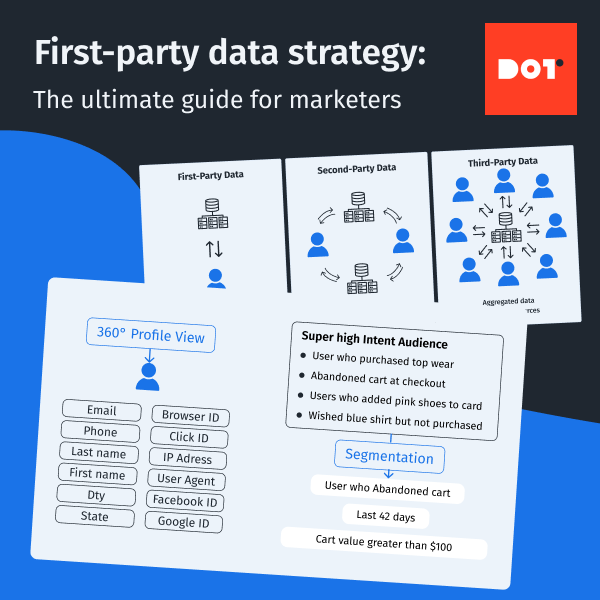
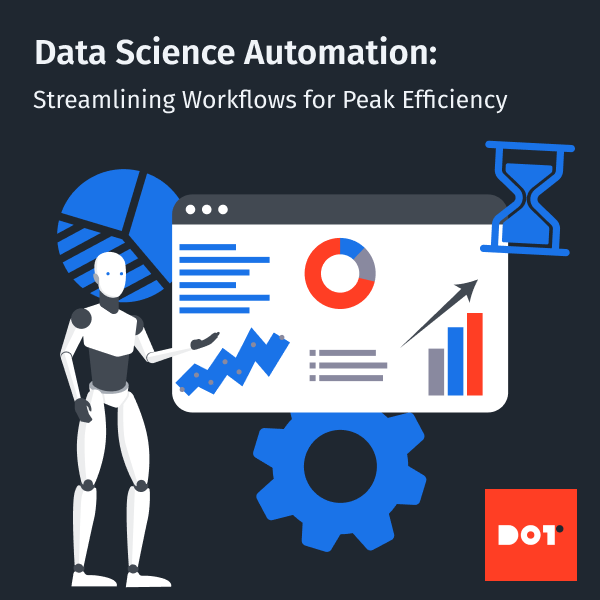
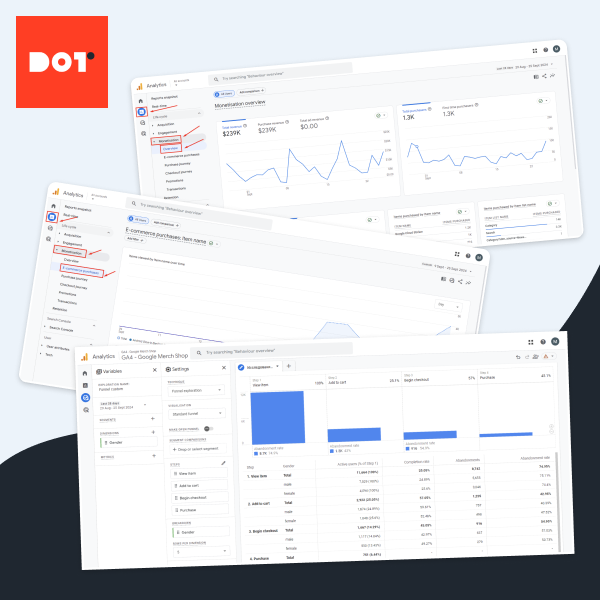
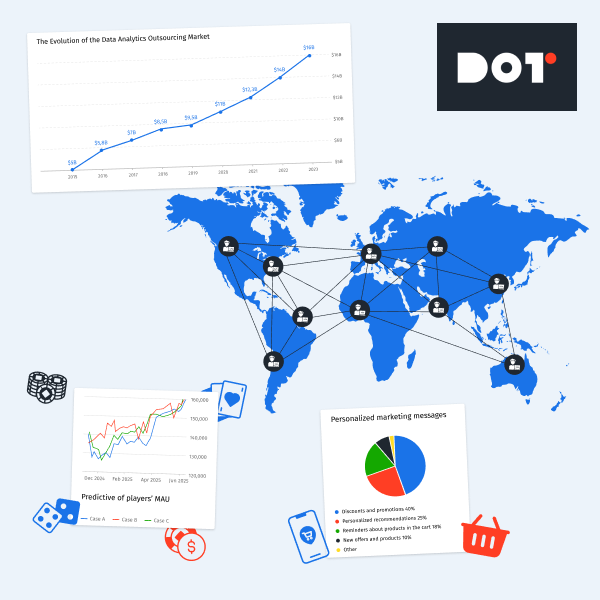
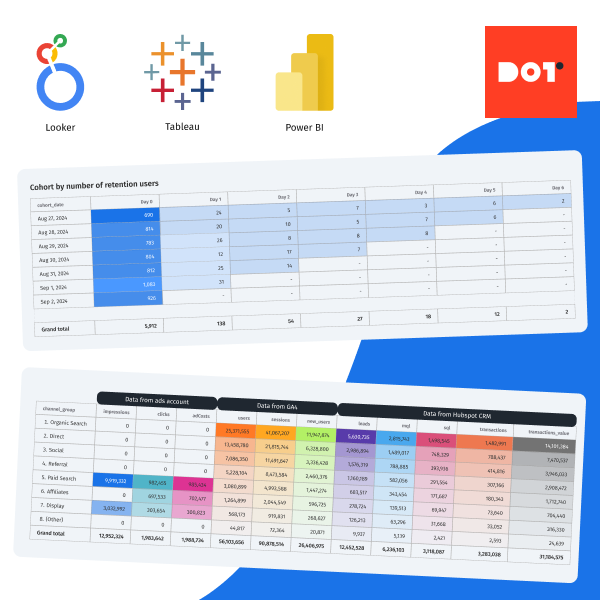
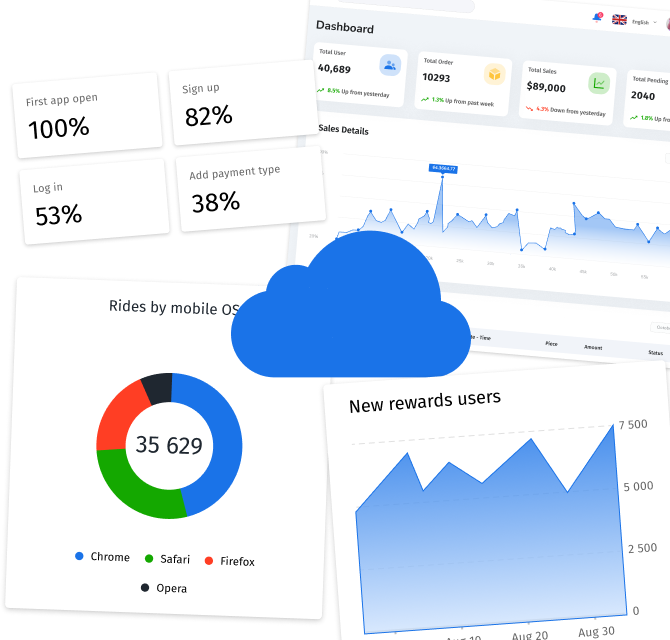
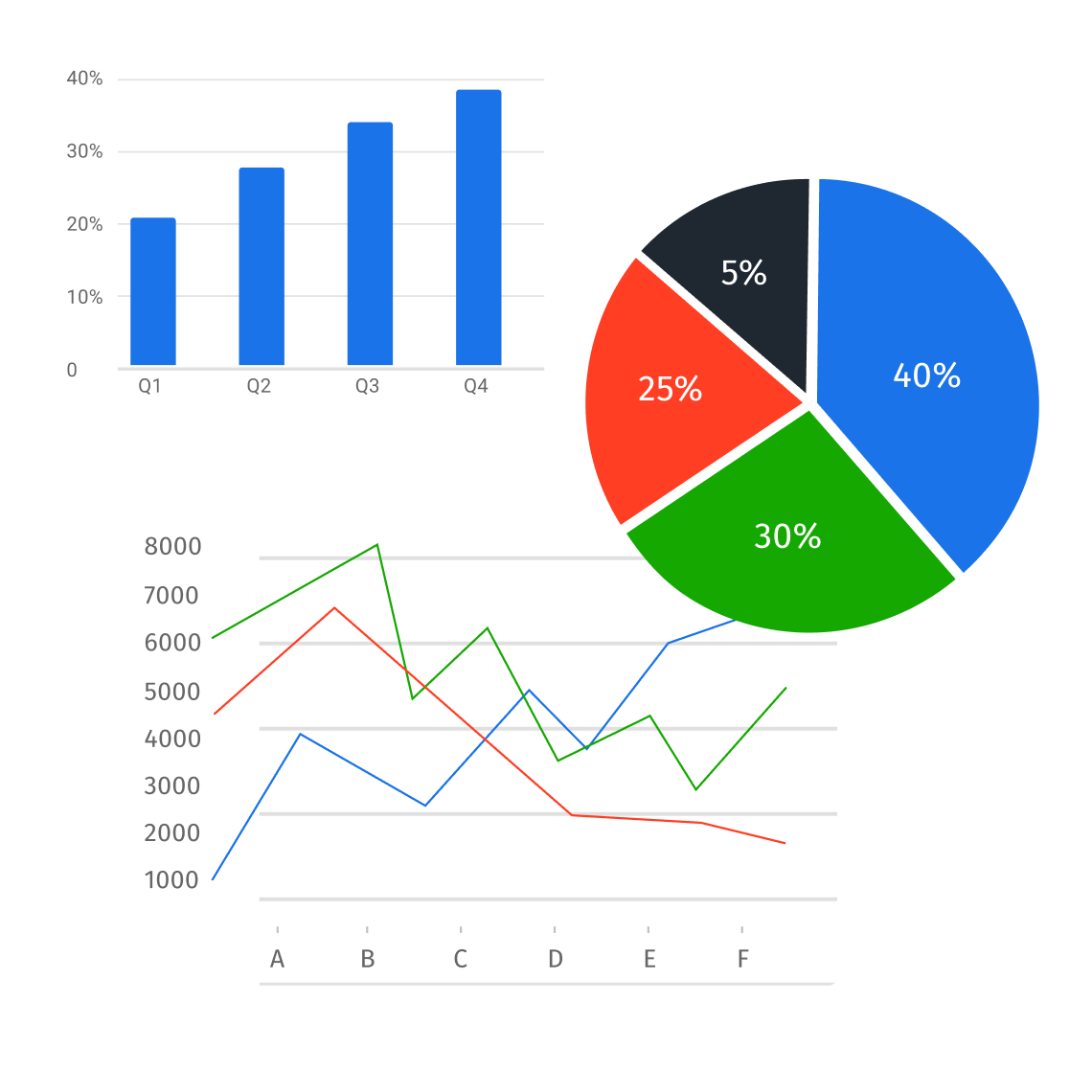
Leave a Reply